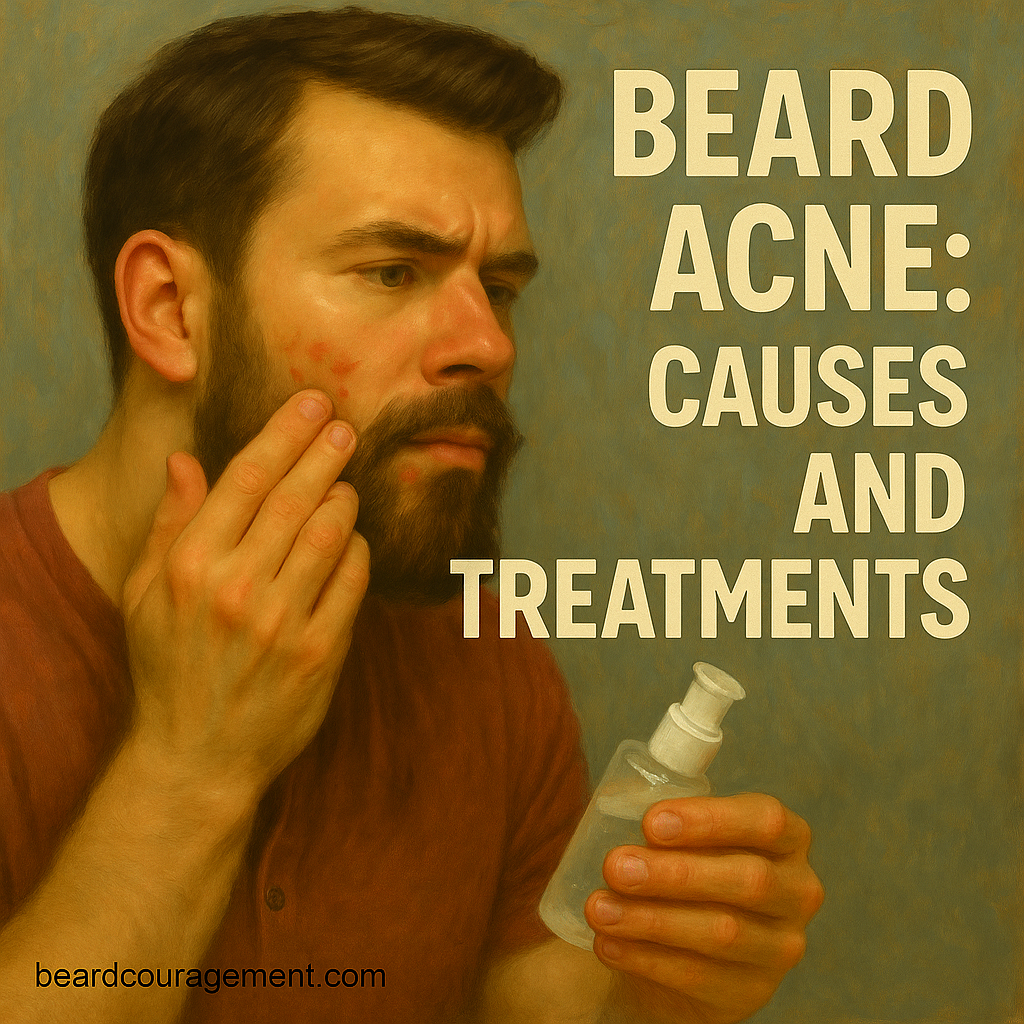
Beard acne — sometimes called “beard pimples” or “folliculitis” — is one of the most frustrating beard problems men face. You want a thick, healthy beard, but irritation, bumps, and breakouts can make it uncomfortable or unsightly. The good news? With the right care and products, beard acne is easy to control and prevent.
What Is Beard Acne?
Beard acne occurs when pores or hair follicles get clogged with oil, dead skin, dirt, or bacteria. Unlike normal acne, it’s often triggered by friction, poor hygiene, or trapped sweat beneath the beard. These blockages cause inflammation, resulting in red bumps or whiteheads.
Common Causes of Beard Acne
1. Clogged Pores and Dead Skin
Beard hair traps oil and dead skin cells close to the skin. Without proper cleaning, they build up and block follicles, leading to pimples and irritation.
2. Bacteria from Poor Hygiene
Touching your beard frequently or not washing it enough introduces bacteria that can inflame pores. Sweat and dirt also collect easily in beard hair throughout the day.
3. Ingrown Hairs
Ingrown hairs occur when strands curl back into the skin instead of growing outward. They cause small, painful bumps that resemble acne. Regular exfoliation helps prevent them.
4. Product Buildup
Using heavy beard balms or oils with synthetic ingredients can clog pores. Always choose non-comedogenic (non-pore-clogging) products designed for facial use.
5. Irritation from Shaving or Trimming
If you shave or line up your beard often, razors and trimmers can cause micro-cuts or friction, making it easier for bacteria to enter and cause inflammation.
How to Treat Beard Acne
1. Wash Your Beard Regularly
Clean your beard 3–4 times per week using a gentle beard shampoo or cleanser. Avoid harsh soaps that dry out your skin.
Pro Tip: Rinse thoroughly to remove all residue.
2. Exfoliate Once or Twice a Week
Use a soft beard brush or mild facial scrub to remove dead skin cells and unclog pores. Regular exfoliation reduces ingrown hairs and promotes circulation.
3. Moisturize with Lightweight Oils
Hydration prevents dryness and irritation. Opt for lightweight, natural oils like jojoba, grapeseed, or argan, which nourish without blocking pores.
4. Avoid Touching Your Beard Too Much
Constantly touching or scratching your beard transfers dirt and bacteria from your hands to your face. Keep your hands clean and avoid over-grooming.
5. Keep Grooming Tools Clean
Wash your trimmer blades, combs, and brushes regularly. Germs on grooming tools are a hidden cause of recurring breakouts.
6. Use Spot Treatments If Needed
If you experience persistent beard acne, use a mild topical treatment containing benzoyl peroxide or salicylic acid — but apply carefully to avoid overdrying.
When to See a Dermatologist
If your beard acne is severe or painful, a dermatologist can prescribe topical or oral medications to reduce inflammation and bacteria. Professional care can make a huge difference if home remedies aren’t enough.
Key Takeaways
- Beard acne is caused by clogged pores, bacteria, and irritation.
- Regular cleaning, exfoliation, and lightweight oils help prevent breakouts.
- Consistency and hygiene are the keys to clear, healthy skin beneath your beard.
